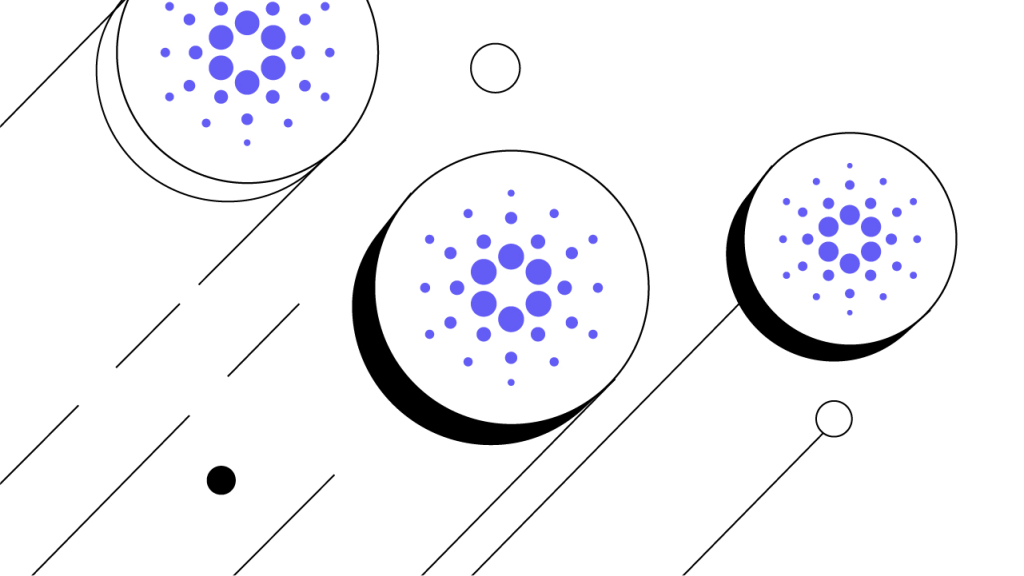Contents
Cardano's Mary Hardfork: Enabling Tokens and NFTs
The Mary hard fork update was designed to give Cardano the power to tokenize — without the need for smart contracts.

Summary
Cardano (ADA) is a third-generation blockchain platform that became a multi-asset ledger following the Mary hard fork. The upgrade gave the Cardano blockchain the ability to create fungible and non-fungible tokens (NFTs) on-chain, without the need for a dedicated smart contract. This greatly lowers fees and closes security exploits, opening up Cardano as another option for blockchain-based tokens — and allowing the platform’s users to make more use of a wider variety of these tokens. Use cases for Cardano include inventory tracking, identity management, NFTs, transactions, and decentralized applications (dApps).
The Mary Hard Fork: Another Stop Along the Cardano Roadmap
The blockchain is on a multi-phase developmental roadmap towards its complete iteration as a highly scalable, decentralized, and secure blockchain network. The Mary hard fork is a major network update that (amongst other updates) makes a multi-asset ecosystem on Cardano possible. It is the landmark update of the of development, which is the second of Cardano’s five developmental phases. Mary launched on March 1st, 2021, and its rollout highlights a number of key features and benefits offered by Cardano’s technology.
Cardano’s Hard Fork Combinator
Most blockchains rely on network to update. This means that all of the participating that furnish the network must switch to a new operating chain and discard the prior network. This can be quite a disruptive process, and occasionally results in forked currencies or ghost chains. Cardano updates have historically tended to cause less disruption for network participants than on other blockchain networks, where users are often faced with questions regarding what the update means for their asset holdings, if exchanges and wallets will support resulting from a split, and if the hard fork will lead to network downtime.
Like the Shelley hard fork that preceded it in July 2020, the Mary hard fork executed fairly smoothly on March 1st, 2021. This was largely thanks to Cardano’s , which helped make the transition a straightforward process. On most blockchain networks, a hard fork upgrade goes something like this:
The pre-fork blockchain protocol stops operating temporarily.
Any new changes and rules to the blockchain protocol are implemented.
The post-fork chain restarts with the new protocol changes.
During most hard forks, the forked chain will be a wholly separate entity from the previous version. In addition, the previous version’s transactions and history may no longer be available. When the Cardano blockchain updated from the centralized (Phase 1) to a more decentralized Shelley Phase, the hard fork didn’t radically alter the underlying blockchain. That’s because Cardano’s HFC combined the pre- and post-fork protocols without network interruption and allowed both protocols and to appear as one. When it started, the hard fork update contained pre-fork Byron blocks and added post-fork Shelley blocks after a transition period. There was no hard restart that erased the pre-fork ledger history thanks to this process.
Unlike many other hard forks, Cardano’s HFC method does not require a simultaneous and prompt update of all network nodes. Cardano nodes were able to update gradually thanks to the fork’s built-in transition period, and even allowed some nodes to process the Shelley blocks while other nodes ran the pre-fork Byron blocks. The HFC process is also designed to help encourage uninterrupted hard fork updates in the future, which will all be included in a single — but upgradeable — blockchain ledger.
Cardano Updates: Token Creation and More
During the Mary hard fork — also known as the Mary Upgrade — Cardano rolled out the Goguen native token upgrade, which makes Cardano a multi-asset ledger. This gave Cardano users the ability to mint and create native Cardano tokens on the network. The first token generators will need to use Cardano’s to mint these tokens; a subsequent update to the Cardano wallet will allow for easy token generation via the wallet interface. Just like , Cardano is now able to create and — with some notably unique benefits.
On Ethereum, token smart contracts are paid with using — which have been cost-prohibitive at times, and can vary based on Ethereum’s usage rates and network congestion. Cardano tokens do not require smart contract execution fees. On Cardano, native tokens are created , but sending tokens requires a small transaction fee called the mini-ADA-value. You can even bundle multiple tokens together in a single transaction, and fees don’t vary based on network demand. In much the same way that transaction fees are a fraction of , Cardano token transactions can in some cases be less than one percent of comparable Ethereum transactions.
Cardano’s Token Security, Scaling and Future
Since Cardano’s tokens are forged on-chain, there is little room to exploit smart contract vulnerabilities or other risks associated with human error. The token logic exists on the Cardano ledger, which tracks all transactions on-chain. That means that Cardano’s user-created tokens feature the same robust security as the Cardano blockchain itself. This is appealing to many because the results of a smart contract can be operationally debilitating and damage consumer confidence. Due to these benefits, many see Cardano as a contender to .
Cardano began as a simple cryptocurrency that could be used to buy, sell, and transact. As the network has developed, its functionality has increased beyond transactions to include smart contract and creation, and inventory tracking, fungible and non-fungible on-chain token creation, and various enterprise use cases. Cardano’s approach to development has helped fuel its significant popularity, and its recent upgrades position the network well to increase usership. The Cardano team is known for its academic and research-intensive focus, and has plotted an ambitious approach to improving the blockchain’s functionality with a multi-phase roadmap.

Author
Is this article helpful?
